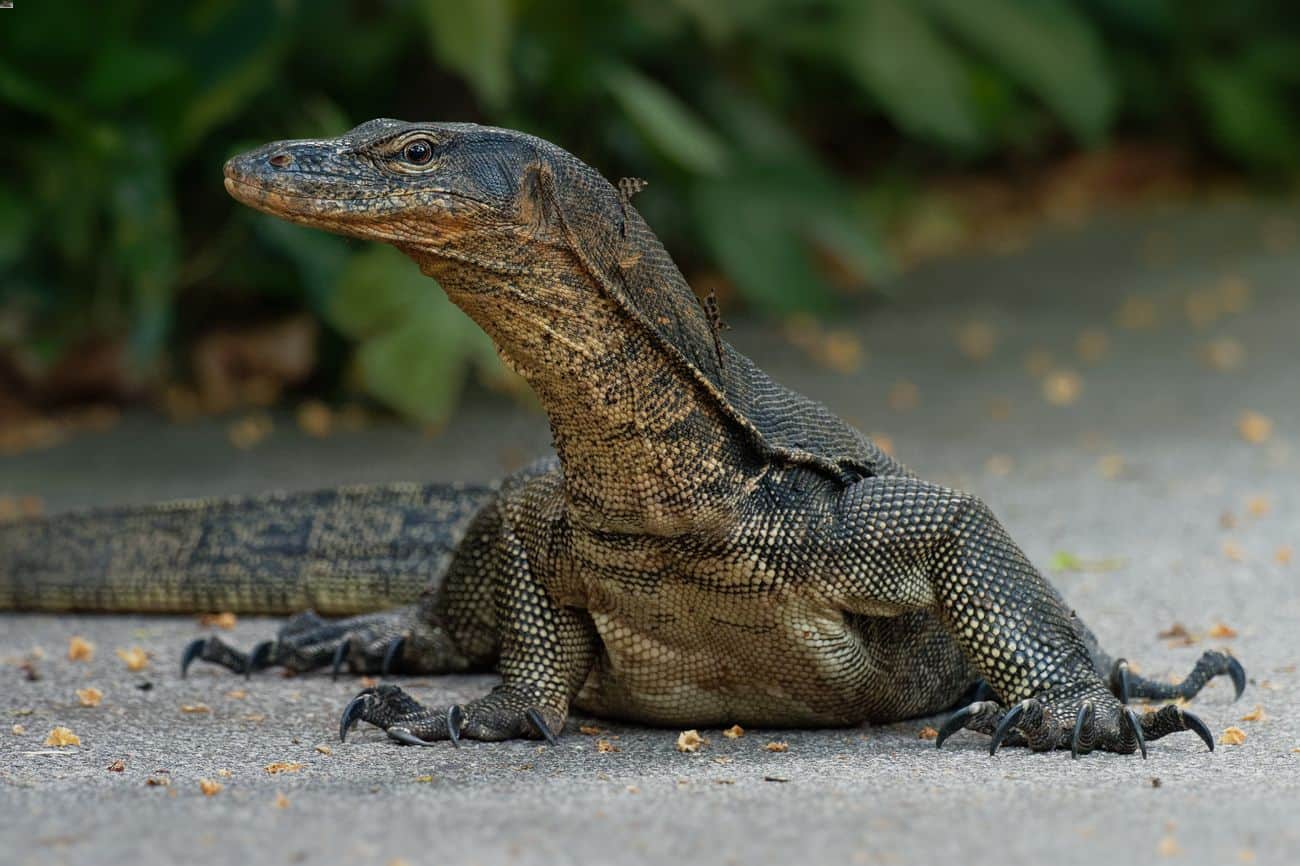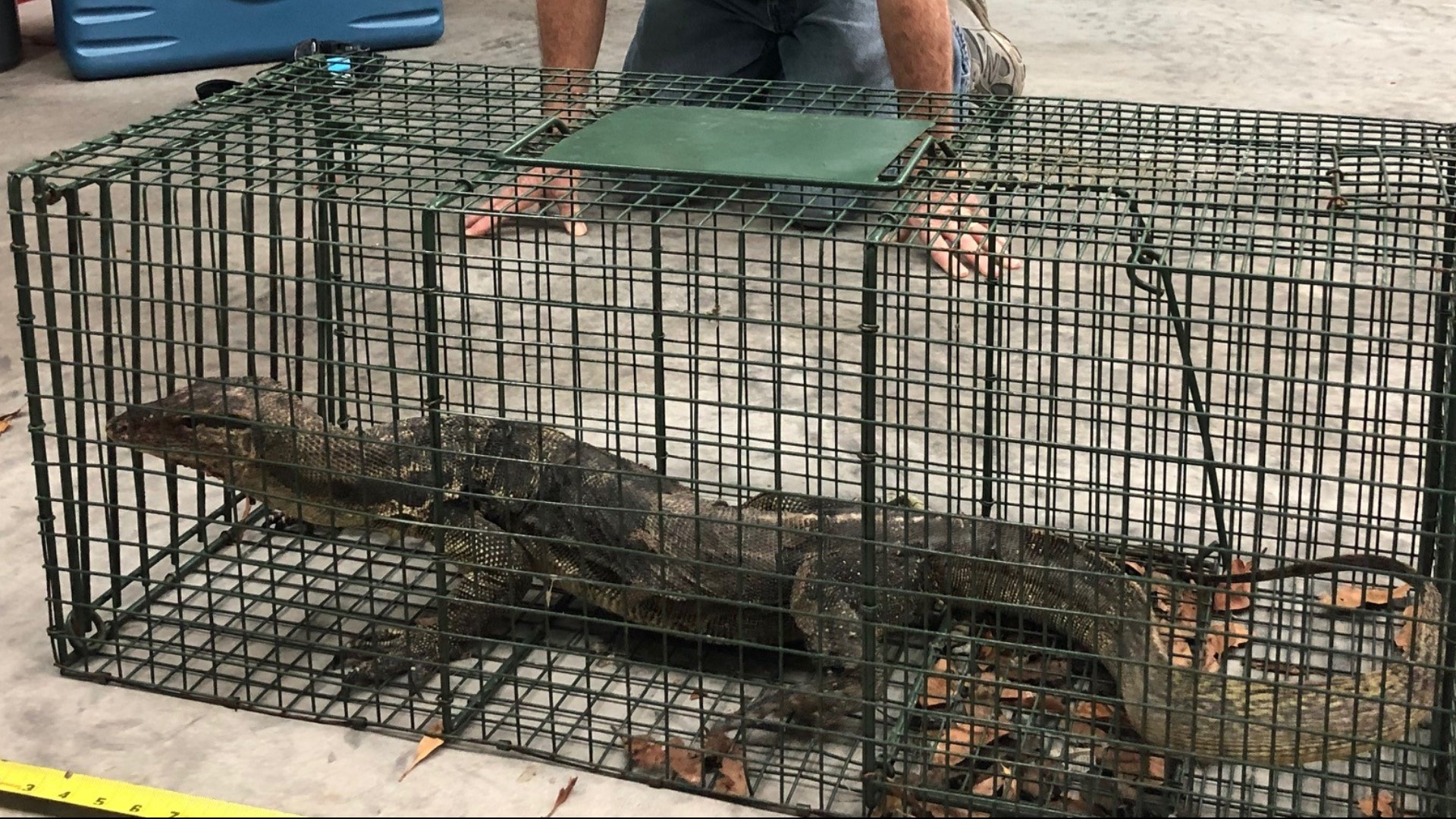Habitat and Distribution: Asian Water Monitor Florida

Asian water monitor florida – In Florida, the Asian water monitor prefers freshwater habitats such as lakes, rivers, ponds, and marshes. It often basks on logs, rocks, or vegetation near the water’s edge and can also be found in brackish and saltwater environments, including estuaries and mangrove swamps.
The Asian water monitor, a formidable predator in Florida’s wetlands, is a creature of both fascination and concern. Its presence has raised questions about the delicate balance of the ecosystem. As we delve into the complexities of its impact, it’s worth noting the recent appointment of a new Lakers head coach.
The team’s fortunes may be in flux, but the Asian water monitor remains a symbol of the ever-changing nature of Florida’s wildlife.
The species was introduced to Florida in the 1990s and has since established populations in several counties, including Miami-Dade, Broward, Palm Beach, and Lee. It has also been reported in other parts of the state, including the Everglades and the Florida Keys.
In the swamplands of Florida, the Asian water monitor, a formidable reptile, stalks its prey. This invasive species poses a threat to native wildlife, but its presence also underscores the fragility of our ecosystems. While the plight of the water monitor serves as a cautionary tale, it also reminds us of the importance of providing support to those in need.
Just as the water monitor struggles to adapt to a foreign environment, many Americans face challenges in securing financial stability. Fortunately, programs like Supplemental Security Income offer a lifeline, providing a safety net for those who have fallen on hard times.
The latest news on Supplemental Security Income can be found at supplemental security income news , where you can stay informed about changes to the program and how it can assist those in need. As we navigate the complexities of our natural and social landscapes, let us remember that both the Asian water monitor and those struggling with financial insecurity deserve our attention and compassion.
Human Activities and Range Expansion, Asian water monitor florida
Human activities have significantly influenced the range and population dynamics of the Asian water monitor in Florida. The pet trade, in particular, has played a major role in its introduction and spread. Many individuals were released or escaped from captivity, establishing feral populations in the wild.
The Asian water monitor lizard, an invasive species in Florida, has been spotted in the Sunshine State’s waterways. Meanwhile, why is Southwest cancelling flights today ? The airline has cited operational challenges and weather as reasons for the disruptions. Back to the water monitor lizard, experts warn that the non-native species poses a threat to native wildlife and can transmit diseases to humans.
Additionally, the alteration of natural habitats through land development and urbanization has created new opportunities for the Asian water monitor to thrive. These altered habitats often provide ample food and shelter, facilitating the species’ expansion.
The Asian water monitor is a large lizard native to Southeast Asia. It is a powerful swimmer and can hold its breath for up to 40 minutes. In the wild, it feeds on fish, frogs, and small mammals. In captivity, it can be fed a diet of crickets, mealworms, and pinky mice.
Trooping the Colour is a traditional ceremony that takes place in London every year. It is a celebration of the Queen’s official birthday. The ceremony involves a parade of soldiers and horses, and the Queen inspects the troops. The Asian water monitor is a fascinating creature that is well-adapted to its environment.
It is a powerful predator and a skilled swimmer.
Physical Characteristics and Behavior

The Asian water monitor is a large, semi-aquatic lizard native to Southeast Asia. It is one of the largest lizard species in the world, with males reaching an average length of 4-6 feet and females averaging 3-4 feet. The Asian water monitor has a long, slender body with a muscular tail. Its coloration varies from olive green to dark brown, with a lighter belly and yellow or orange markings on its head and body. It has large, powerful jaws and sharp teeth for catching and eating prey.
The Asian water monitor is a solitary creature that is primarily active during the day. It is an opportunistic predator that feeds on a wide variety of animals, including rodents, birds, fish, and even small mammals. The Asian water monitor is also a skilled swimmer and climber, and it is often found near water bodies where it can hunt for food and escape from predators.
Adaptations to the Florida Environment
The Asian water monitor has successfully adapted to the Florida environment. It is found in a variety of habitats, including swamps, marshes, and canals. The Asian water monitor has also been known to adapt to urban environments, and it is sometimes found in parks, golf courses, and even residential areas.
Ecological Impact and Management
The introduction of the Asian water monitor to Florida has had significant ecological impacts. The species is a voracious predator, feeding on a wide variety of native wildlife, including birds, reptiles, amphibians, and small mammals. This has led to declines in the populations of some native species, particularly those that are already threatened or endangered.
In addition to its predatory impacts, the Asian water monitor also competes with native species for resources such as food and habitat. This can further exacerbate the negative impacts of the species on native wildlife.
The presence of the Asian water monitor in Florida also poses a potential risk to human health. The species can carry diseases that can be transmitted to humans, and its aggressive behavior can make it dangerous to encounter.
Management
The management of the Asian water monitor in Florida is a complex and challenging task. The species is well-established in the state, and it is difficult to control its population. However, there are a number of measures that can be taken to mitigate the negative impacts of the species.
One important management strategy is to reduce the availability of food and habitat for the Asian water monitor. This can be done by removing food sources, such as garbage and pet food, and by modifying habitats to make them less suitable for the species.
Another important management strategy is to control the population of the Asian water monitor. This can be done through a variety of methods, including trapping, hunting, and the use of chemical control.
In addition to these measures, it is also important to educate the public about the Asian water monitor and its potential impacts. This can help to reduce the likelihood of people coming into contact with the species and contracting diseases.
By taking these steps, it is possible to mitigate the negative impacts of the Asian water monitor on native wildlife and human health. However, it is important to note that the management of this species is an ongoing process, and it will require continued effort and cooperation from a variety of stakeholders.
Asian water monitor lizards are making their presence felt in Florida, and the state has declared a state of emergency due to the potential threat these invasive reptiles pose to the native ecosystem. These lizards, which can grow up to six feet long, have been known to prey on native wildlife and compete with native species for resources.